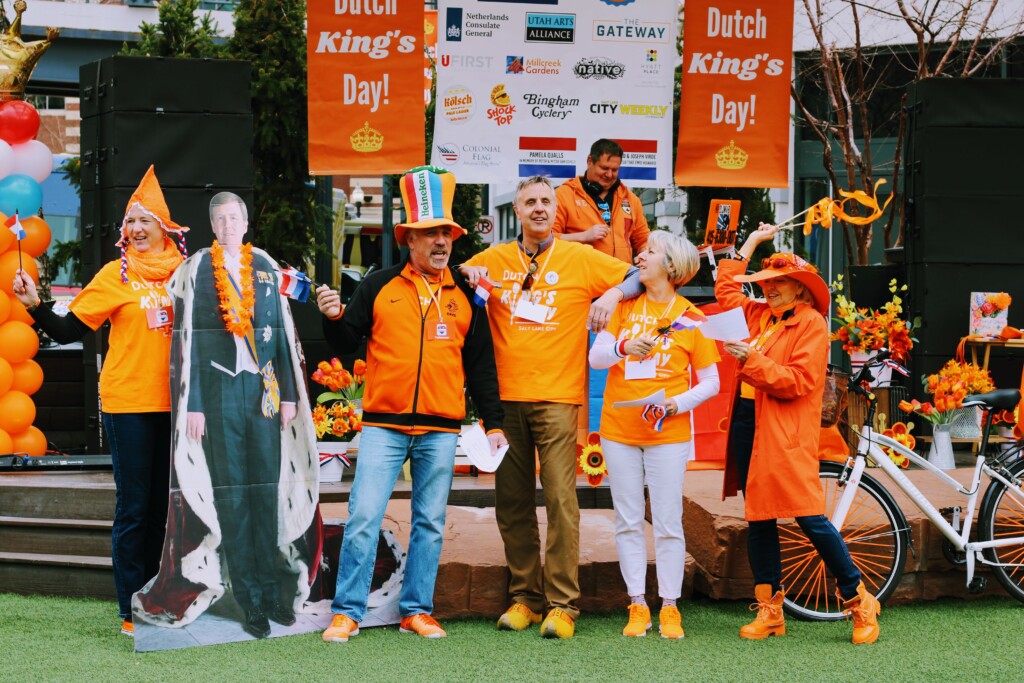
We recently spoke with Dr. Brett Mciff, physical activity coordinator at the Utah Department of Health. Brett has spent his career working to improve the public health in Utah through encouraging regular physical activity. The benefits of active living are numerous and well documented:
- Stress relief
- Better management of diabetes
- Decreased risk of heart attacks and strokes
- Lower risk of certain types of cancer
- Relief from minor depression
- Management of ADHD
- Less pain from arthritis
- Living longer and better
So why don’t we do it? In Utah, more than one in five of us report no leisure time physical activity. We have engineered activity out of our world, and our health is suffering. Now, if your goal is to get ripped, or to be the best athlete out there, then go for it. For the rest of us, what we need is a safe, comfortable place to simply go for a walk. State agencies and local governments are working together to build walkable communities, places that encourage active transportation to promote health, improve air quality, and support the social network of the community. You don’t need special clothes or to sweat to get the benefits, you just have to move more, and more often.
Public health professionals worry that the only people listening to their advice are the “worried well”—people who are healthy, but worry that they aren’t healthy enough. Meanwhile, nearly all of the population say they know they need to eat better and get exercise. But it isn’t happening. When asked why they don’t walk more, a leading answer is that after time constraints, they don’t have place to go where they feel safe.
For the vast majority of human existence, we designed our built environment for a 3 mph world. We designed it for people first, because that’s all we knew and we knew how to do it well. We can get back to this. It would mean focusing on the safety and comfort of people first, then figuring out how to accommodate cars. This means investing in sidewalks, and making street traffic slower so people feel comfortable and safer. This means building more trails. This means making it easier and safer to cross the street, and providing means to do so in many more locations. Another powerful way to get active and also save money is to take transit to work. A recent study found that 29% of transit users meet physical activity recommendations just from walking to and from their bus stop.
Streets are the places where we live, where our kids go to school, where we work, where we shop. But too often our streets are built to high-speed highway standards. It’s no wonder that so few people walk along them; they aren’t designed for people.
Fixing the built environment isn’t enough, but it’s a necessary foundation. We need a cultural shift back to walking. When people walk, other people feel comfortable walking, too.
Notice how you feel after a good walk. Notice where you feel unsafe along your walk. Take a picture and post it on social media. Tell your city engineer about it. Tell your city council about it. Tell UDOT about it. Many an unsafe crossing has been fixed once decision makers knew about the problem.
We know how to build walkable communities that will lead to better health. The issue isn’t a money problem, it is a priority problem. Once we prioritize healthful environments, we all benefit as a community.
Jon Larsen – Board Chair, Congress for New Urbanism, Utah Chapter
Development that does not take our breath away
The potential for further development around the Point of the Mountain, or the area dubbed “Silicon Slopes” that encompasses Draper, Sandy, Provo, Lehi and Orem, is an exciting prospect for many. It is a key area of economic growth for Utah, attracting several tech companies, and a breeding ground for local tech entrepreneurs.
The area is ripe with employment opportunities, and the beautiful natural landscapes and extensive trail systems are what attracted my family to the area. As with many, I am happy to call Utah home, and specifically this area, yet with the winter air pollution and the summer dust clouds, I wonder what I might be subjecting my family to in the long run.
Working with the doctors of Utah Physicians for a Healthy Environment (UPHE) over the last year has brought this concern into even sharper focus. With majority of emissions coming from vehicles and area sources, we now understand the importance of a healthy built environment—how do we develop homes, buildings, streets, and open spaces in the right balance in order to support healthy outcomes? The built environment affects our physical activity, the air we breathe, and our mental/emotional well-being.
According to the Centers for Disease Control and Prevention (CDC), the habits that arise from unhealthy built environments “lead to poor health outcomes such as obesity, cardiovascular disease, diabetes, and some types of cancer.”
Population growth projections expect 2.8 million more people in Salt Lake and Utah counties by 2050. With this growth comes more cars on the road, and more homes built. Salt Lake County and Provo/Orem areas have already been classified as “serious” by the Environmental Protection Agency for poor air quality. Simply put, the air we breathe is not safe, especially for vulnerable populations.
Medical research links poor air quality to the higher risks of preterm births and stillbirths, low birth weight in infants, and other pregnancy complications. Accommodating a larger population may mean having to build more schools and multi-family housing units near freeways and vice versa.
Research has shown that children exposed to traffic pollution (even short-term) have impaired cognitive functions. Wood smoke (which is often high even on red air days in the Provo area) contains polycyclic aromatic hydrocarbons (PAHs) that correlate to decreased white brain matter in children of mothers exposed to high levels while pregnant.
The Envision Utah Point of the Mountain survey was recently released and showed air quality and traffic congestion to be primary concerns for those who live and work in the area. We hope our leaders respond to this information by realizing that in order to attract and retain talent in our economy, the built environment must promote more walking and cycling, decrease vehicle emissions, and support sustainable buildings and homes.
Yes, there are several things individuals can do to improve air quality and decrease carbon emissions—such as not idling, not burning wood, and installing solar panels, to name a few—but regulatory agencies needs to encourage such decisions.
And let’s not forget the elephant in the room. What do we do with existing industries, such as refineries and gravel pit and mining operations that are scattered throughout our densely populated area? For example, consider the gravel pit operations cutting into the Point of the Mountain. It’s wonderful that Geneva Rock committed millions of dollars in clean air initiatives this year. However, that does not mitigate the fact that the pit has left an ugly scar on the mountain in a location where strong winds continue to blow toxic dust that contains heavy metals, uranium, arsenic and silica north and south of Silicon Slopes.
I hope our city planners and developers can see the importance of building environments that foster health, for the sake of our children and economic success. We need to continue to educate ourselves, talk to our neighbors, and talk to our leaders.
UPHE has launched the Unmask My City campaign to bring attention to the health impacts of urban pollution and carbon emissions. The Wasatch Front Regional Council is in a process of accepting feedback on different scenarios of development, particularly in terms of transportation, interconnectivity and land use, to meet their Wasatch Choice 2050 goals.
So, what will it take to elevate life in Utah? Economic development is not enough. Siemens, a global company offering sustainable technologies for urban infrastructures, developed a Green City Index that looked at more than 120 cities across North America, Europe, Latin America, Asia and Africa.
Their study concludes that “money is not everything…cities with a below-average income clearly outperform their peer cities with higher incomes…Wealth can even be counterproductive in the early stages of economic development, when more affluence often correlates with more emissions, more urban sprawl, lower density and more cars.”
I’m hopeful that as our politicians grapple with urban planning and population growth, they will give greater priority to breathable air and healthy environments over economic profit. The opportunity for planning sustainable growth on the Wasatch Front is limited. The time to act is now.
Denni Cawley is executive director of Utah Physicians for a Healthy Environment, a nonprofit dedicated to the health and well-being of Utahns and composed of more than 3,000 members including around 400 physicians. UPHE works to address environmental health risks, guided by medical evidence, with a particular focus on air pollution and its health impacts.





